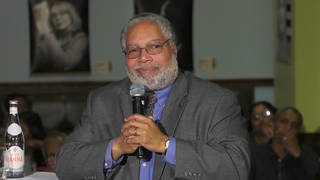
Topics
There may be a hidden ingredient in the chocolate cake you baked, the candy bars your children sold for their school fund-raiser or that fudge ripple ice cream cone you enjoyed on Saturday afternoon. Slave labor.
Forty-three percent of the world’s cocoa beans, the raw material in chocolate, come from small, scattered farms in this poor West African country. And on some of the farms, the hot, hard work of clearing the fields and harvesting the fruit is done by boys who were sold or tricked into slavery. Most of them are between the ages of 12 and 16. Some are as young as 9.
The lucky slaves live on corn paste and bananas. The unlucky ones are whipped, beaten and broken like horses to harvest the almond-sized beans that are made into chocolate treats for more fortunate children in Europe and the United States.
Americans spend $13 billion a year on chocolate, but most of them are as ignorant of where it comes from as the boys who harvest cocoa beans are about where their beans go.
This is how Sumana Chatterjee and Sudarsan Raghavan, two reporters for Knight Ridder Newspapers, began their ground breaking investigation of the cocoa trade in the Ivory Coast and the child slave labor that it depends on.
Guests:
- Sumana Chatterjee, reporter for Knight Ridder
- Sudarsan Raghavan, reporter for Knight Ridder
- Susan Smith, a spokesperson for Chocolate Manufacturers Association
- Peter Leon, legislative director for New York Congressperson Elliot Engel, who has introduced an amendment to an Agricultural spending bill calling for anti-child slave labor labels on chocolate products.
202-224-3121 Congressional switchboard–to urge your Congressperson to support the amendment
Related links:











Media Options